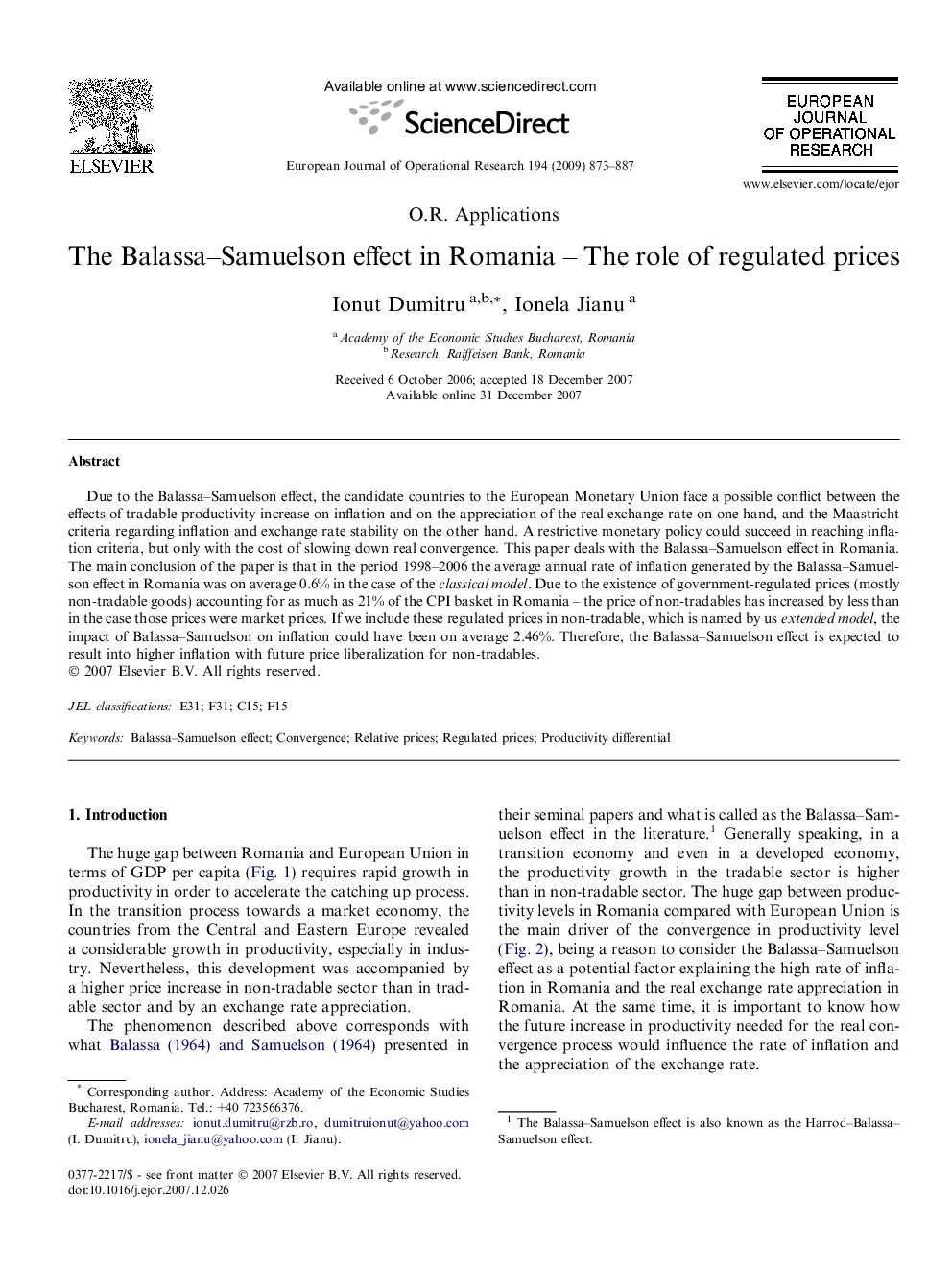| Article ID | Journal | Published Year | Pages | File Type |
|---|---|---|---|---|
| 477347 | European Journal of Operational Research | 2009 | 15 Pages |
Due to the Balassa–Samuelson effect, the candidate countries to the European Monetary Union face a possible conflict between the effects of tradable productivity increase on inflation and on the appreciation of the real exchange rate on one hand, and the Maastricht criteria regarding inflation and exchange rate stability on the other hand. A restrictive monetary policy could succeed in reaching inflation criteria, but only with the cost of slowing down real convergence. This paper deals with the Balassa–Samuelson effect in Romania. The main conclusion of the paper is that in the period 1998–2006 the average annual rate of inflation generated by the Balassa–Samuelson effect in Romania was on average 0.6% in the case of the classical model. Due to the existence of government-regulated prices (mostly non-tradable goods) accounting for as much as 21% of the CPI basket in Romania – the price of non-tradables has increased by less than in the case those prices were market prices. If we include these regulated prices in non-tradable, which is named by us extended model, the impact of Balassa–Samuelson on inflation could have been on average 2.46%. Therefore, the Balassa–Samuelson effect is expected to result into higher inflation with future price liberalization for non-tradables.
